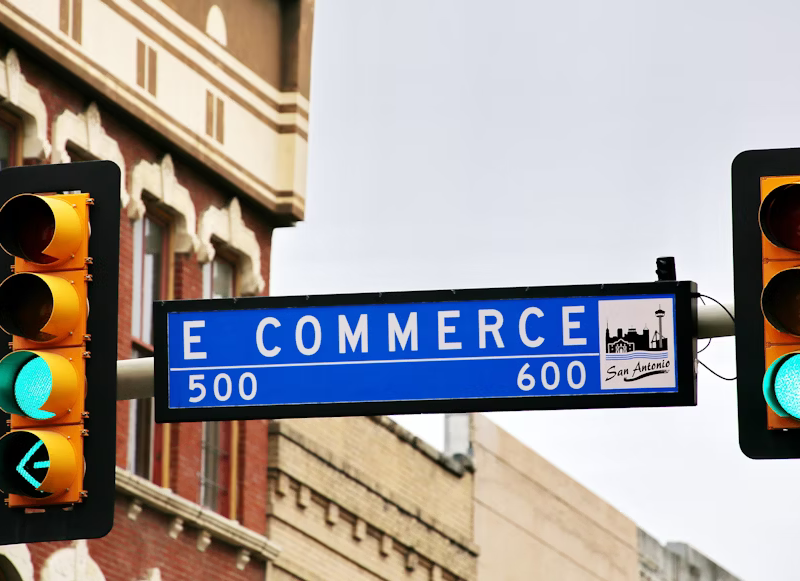Every e-shop has a very simple goal – to sell the products to customers. However, the problem arises when the customer cannot find the desired product. Either because the e-shop does not offer it, or worse: the search function does not work as expected. Let’s take an in-depth look at what a quality search engine should be able to handle. What are the differences in search across individual market segments? How can the product recommendation feature help you to increase conversions? And is it even worth spending time and money on search optimization? We asked Gejza Nagy, co-founder of Luigi’s Box, a startup that helps e-commerce and corporates uncover the hidden value of their search.
What is the significance of the search function in an e-shop in general?
This is a good and very important question. E-shops often tend to overlook the search. They usually focus primarily on having a clean UI, site speed, or appealing design to maximize sales and treat search as a secondary, unavoidable feature that is just present on the website.
They don’t realize that a regular website visitor often has no intention of buying; they just came to “have a look”. Whereas if a user uses site search, they usually do so intending to find something specific and are very likely to buy it. On average, such a customer has a 5 times higher conversion rate than one who finds the product using the classic website navigation.
Search usage rates vary by segment. For example, in pharmaceuticals, around 24 percent of customers use search when purchasing, and in the books segment, it is almost 44 percent. But even if the average across markets is “only” 20 percent, these conversions usually represent a third to a half of the total e-shop’s turnover. Therefore, search is not a function to neglect.
Does the customers’ behaviour have any effect on the search?
If a customer uses site search, they usually already know exactly what they want. However, we must take into account several specifics. For example, in electronics, DIY, and healthcare segments, product codes are used in addition to descriptive phrases. Here, the system must be able to show only the given product and no other options with a similar name or characteristics, as is the case with fashion.
For example, I can mention a hardware store where different screws may have a product code that differs by a single digit. When a customer is looking for a specific product, they certainly do not want to see a list of ten other similar ones in the search. That would be confusing. In short, they want to find what they are looking for.
On the other hand, fashion segment is the complete opposite. While in other industries, 90% of users expect to find the desired product on the first page of search results, in the case of clothing and footwear, customers prefer to go through several pages with similar products. They usually decide based on the visual side, so they want to compare the options and find what suits them in terms of style, not technical parameters.
Discount days and shopping holidays also play an important role for customers, especially if they know about them in advance. Many like to wait and hope to buy their desired product cheaper. For example, last year, on Black Friday, which globally falls on the last weekend of November, customers made eight times more searches and clicks on e-shops than on the previous, more or less regular weekend.
Data from a thousand of our partner e-shops also showed that this activity increased by 45% compared to 2019, undoubtedly resulting from the reduced sales during the covid pandemic. And even though this year’s increase probably won’t be so drastic, people have already gotten quite used to online shopping thanks to it.
Where do e-shops make the most mistakes with search engines?
Foremost, they do not pay attention to search at all, thus depriving themselves of valuable conversions. At the same time, only 1 to 5 percent of e-shops with an optimized search still encounter no-result searches, while for shops, it is 20 to 40 percent.
The most common reason is that the search engine is simply not “smart” enough. It cannot deal with typos, jargon, singular and plural forms. If the system cannot evaluate the queries correctly, the e-shop will inevitably lose valuable conversions.
A common ailment is also that they provide a search for product names consisting of three letters at least. But in segments such as healthcare, there are many dietary supplements and drugs with only two-letter names.
For example, we solved this problem with the Benu pharmacy network, where customers would previously get no results when looking for “D3”, even though the pharmacy offers various products containing this vitamin. By eliminating the mentioned shortcomings, we increased Benu’s search turnover by almost 10 percent, which is not exactly a small number for a business with an annual turnover of 250 million euros.
We solve these problems using machine learning and artificial intelligence, which constantly improve their ability to match the “imperfectly” entered term with the right product, including its variants in several world languages.
At the same time, we use both technologies as part of the product recommendation function (Recommender). It helps to increase the average value of the customer’s order by recommending other relevant products.
Where is the best place to place the product recommendations in the e-shop?
The most visible advantage of this feature is its flexibility. Smart recommendation boxes can be placed anywhere on the website to feel like a natural part of the design.
Moreover, it is possible to adapt them according to the context of their location. For example, to personalize the main page for each customer based on their previous purchases. They can also be implemented directly into the product details page to offer alternative products with higher margins or better quality (upsell).
At the same time, the product recommendations also fit directly into the shopping cart, where, thanks to artificial intelligence, they can advise customers on what to buy in addition to their current selection of products (cross-sell). It is based on previous purchases, displayed products, and the behavior of the buyer and other customers.
How will the site search change in the upcoming years?
The future certainly belongs to machine learning and artificial intelligence. More precisely, simplification of purchasing decisions will be the key. These technologies have great potential in the possibility of designing tailor-made products for customers according to the type or size of products they have purchased so far. But these technologies will also be able to consider current trends or compatibility with other products that the customer has purchased in the e-shop.
For now, artificial intelligence can handle sales optimization – it can suggest better search results ranking according to what customers want and buy most often. It can also estimate, for example, the desired size of clothes according to the customer’s purchasing preferences, even with different size charts of different manufacturers.
What would you recommend to potential clients who want to get the most out of their e-shop search?
If you’re not sure if you need a better search, try Luigi’s Box for free in our free trial. We offer a 30-day free trial for self-service clients. It will give you an idea of what needs to be improved. However, if you have feedback from your customers and colleagues that your search is not working as expected, don’t keep them waiting and try a three-month trial of Luigi’s Box Search. Its implementation is very simple. Inserting a single script into the website header will take you three minutes, then you will generate a single XML feed, and we will take care of the rest.
If you are interested in more advanced functions, we can focus either on efficient product ranking based on margin, thus maximizing the profit, or continue with personalized recommendations to increase the average order value.
What are the benefits of Luigi’s Box search tools?
- They help understand how to use data about customer buying behavior to increase sales.
- The Autocomplete and the Search show results from the very first typed character.
- It can handle typos, foreign language names, jargon, singular and plural forms of words.
- Recommender helps to increase the average order value by smart suggestions of additional products to upsell and cross-sell.
- The average increase in conversions from search is by more than 31 percent.
- Our products stand out for their simple implementation into any e-shop, using a one-line script in the page header or integration in the background via API.
Gejza is a CEO and Co-Founder of Luigi's Box. He has been working on user experience and conversion rate optimization in e-commerce for over a decade. His primary focus is the company's management, strategy, finance, and helping their biggest clients to get the most out of search and product recommendations.
More blog posts from this author







































